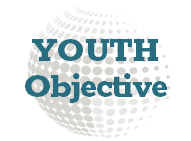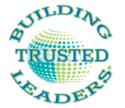Youth Leadership Program Content & Objectives
Our collaborative, trust-based program aims at mitigating youth’s sense of failure, isolationism, and social dysfunction, while supporting the creation and maximization of individual and group performance through interactive, experiential learning.

- Assess key qualities that influence and give direction to personal choices in life.
- Create a set of Personal Values that demonstrates what is important in the participant’s life.
- Design a set of Guiding Principles that shapes the direction and decisions.
- Evaluate the Mission of Iconic leaders.
- Discern how a personal mission leads to positive or negative results in life.
- Discern the difference between those who are able to respond to adversity effectively and those who are not able.
- Identify the key factors for successful response to adversity.
- Design and select a team based on positive adversity response qualities.
- Identify how to shift a negative impact to a positive outcome.
- Assume responsibility, accountability, and impact for team outcome.
- Demonstrate key elements of Collaborative Leadership behavior.
- Demonstrate how to use the collective ideas of others as a means of generating innovative solutions.
- Demonstrate how to turn learn from mistakes, create new value, find opportunity inside problems, and turn breakdowns into breakthroughs.
- Understand the nature of fear and unproductive conflict in destroying trust.
- Use key principles in relationship building, problem solving, and team-building.
- Demonstrate the ability to rebuild trust by key actions and words.
- Demonstrate the effectiveness of these trust principles in the sections and team process used in The Game.
- Identify the factors, actions, and words that influence trust and distrust.
- Assess the drivers of human behavior and how these impact trust, collaboration, innovation, and high performance teamwork.
- Commit to specific actions that will maintain a steady course toward your personal mission and creating a network of trusted peers.
- Use effective verbal and written communications to create collaborative relationships and leadership.
- Demonstrate the value of the four foundational building blocks by producing breakthroughs and high performance results
- Practice what is learned in everyday life using workshop and game format
- Communicate the learnings and key factors to peers to enable spreading the word and deeds of effective collaborative leadership.
- Civic Contribution/Engagement,
- Academic Achievement,
- Healthy Living, Caring for Others,
- Better Work Ethic, Trustworthiness,
- Better Personal Skills & Relationships,
- Higher Resiliency in Crisis,
- Positive Attitude on Life and Future Expectations
- Drug usage,
- Depression,
- Death by suicide,
- Dropout rates,
- Discrimination (such as bullying)

The Institute’s Youth Leadership Development Program focuses on:
- Creating a personal mission statement:
- Demonstration of ability to articulate personal values and guiding principles;
- Enhancing leadership capability:
- Demonstrate distinctions between adversarial, transactional, & collaborative leadership styles and the key mindsets and skillsets for collaborative leadership;
- Improving innovation and changing thinking patterns:
- Demonstration of critical thinking and creative inquiry during problem solving;
- Increasing economic and social benefits:
- Demonstration of value-creation through action, planning, communications, teamwork;
- Integrating diverse cultures and thinking into a collaborative team-based framework:
- Demonstration of use of differences in thinking and skill sets to generate breakthrough learning and positive adversity response through trust-based leadership principles;
- Producing high impact Leadership outcomes in groups and in personal interaction:
- Demonstration of trust-based thinking and skills through a high action, outcome-based interactive community-based game (either a standard set of game scenarios and simulations, or a computer-based interactive game);
- To assist in the creation and adoption of a personal mission statement with guiding principles and core values.
- To provide modeling, key principles, and a support system to rebound successfully from adversity.
- To enable youth to turn every event into a learning experience, develop an inner wisdom, use learning as the foundation of collaborative innovation, and turn breakdowns into breakthroughs.
- To utilize the strategies, principles, and tools to effectively assess the level of trust in their environment, build trust with their peer groups, and to build a support team around them they can trust in difficult times.
- To excite and direct students to accept their role as Collaborative Leader
- To exceed each student’s expectations after 5 days of training, simulation, and game interaction
- To engage the student in the development of a lifelong learning process through connection with alumni of the program (eventually around the world)
- To energize and engage with peers and like-minded community to continue their personal and team development.
We are aiming to deliver a world-class Youth Leadership development program. To ensure program effectiveness and continuous improvement, we expect to engage in a five year study to test and gather data on these key factors:
- Impact on At Risk students (those with highest likelihood for future difficulties)
- Preconditions for Success (what needs to be in place to enhance immediate success)
- Follow-up Support for Success (what support conditions will enhance long-term success)
- Impact on Future Life Experience (in college, work, or parenting)
- Most Effective Training Methodology (what techniques are most impactful to what populations)
We have enlisted the Institute of Applied Research in Youth Development at Tufts University to be our research partner to assist in program development, program delivery, and program effectiveness.
It provides an outlines the Game of Life Program.
Note: Some people think Collaboration is the opposite of Competition. In reality, they both can exist together.
The idea is to collaborate internally — within your team or alliance — and compete externally against your rivals.
A sports team is a typical example of this principle.

